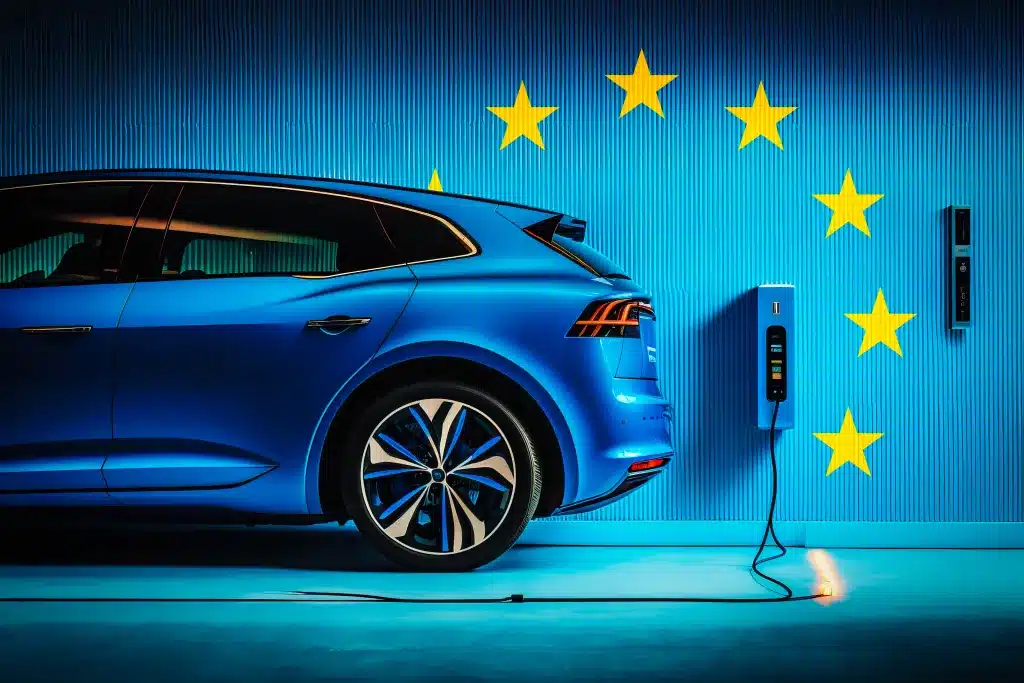The European electric vehicle (EV) market experienced a significant downturn in 2024, marking the sector’s first recorded decline. According to the European Automobile Manufacturers’ Association (ACEA), EV sales in the European Union dropped by 5.9% to approximately 1.4 million units. This stark contrast to the robust growth observed in recent years is evident.
The decline in EV Market Share and Sales
Battery-electric vehicles (BEVs) saw their market share fall to 13.6%, down from 14.6% in 2023. November 2024 figures highlighted a sharper decline, with BEV registrations dropping by 9.5% compared to the previous month. Plug-in hybrid vehicles (PHEVs) also faced a reduction, with registrations down 8.8% and their market share decreasing to 7.6% from 8.1% in 2023.
Germany, Europe’s largest car market, experienced the most significant drop, with EV sales plunging by 27% after the government ended its subsidy program in late 2023. France saw a more moderate decline, while countries like Spain managed to buck the trend, recording positive growth.
Subsidy Cuts and Market Dynamics
The decline is primarily attributed to reducing or eliminating government subsidies for EV purchases in significant markets like Germany. These incentives have historically played a critical role in offsetting the higher upfront costs of EVs compared to internal combustion engine (ICE) vehicles. Analysts also point to increasing competition from Chinese automakers, aggressively entering the European market with competitively priced EVs.
Meanwhile, hybrid-electric vehicles gained traction, with registrations increasing by 18.5% in November 2024 and accounting for 33.2% of the market—surpassing petrol-powered vehicles for the third consecutive month. Overall car sales in the EU rose slightly by 0.8% to over 10 million units, driven primarily by this surge in hybrid vehicle demand.
Global Trends and Norway’s Continued Leadership
Globally, EV sales rose by 25%, fueled by a surge in demand from China. In contrast to the EU’s decline, the UK emerged as Europe’s top EV market by volume, with sales increasing by 21.4% to nearly 382,000 units in 2024. Norway continued to lead in market share, with almost nine out of ten vehicles sold being fully electric, supported by high taxes on ICE vehicles and other policy measures to achieve a zero-ICE sales target in 2025.
Political and Regulatory Challenges
Recent political developments have added uncertainty to the EV industry’s trajectory. President Donald Trump’s executive orders in the United States reversed several climate-focused policies established by the previous administration. These orders include rolling back tailpipe emissions standards and pausing federal funding for EV infrastructure projects. Critics argue that such moves could hinder the global competitiveness of American EV manufacturers and stall progress in renewable energy adoption.
Trump’s policies also highlight a broader debate over the balance between promoting consumer choice and advancing climate goals. While his administration emphasizes reducing regulatory barriers, opponents warn that these actions may slow the transition to cleaner energy technologies.
Future Outlook
The European Union has set ambitious targets, including a ban on selling new ICE vehicles by 2035. However, the recent decline in EV sales underscores the challenges of maintaining momentum in the transition to electric mobility. Industry stakeholders emphasize the need for consistent policy support and competitive pricing to sustain growth in the EV market.
As the global automotive landscape continues to evolve, the interplay between government policies, market competition, and consumer demand will shape the future of electric vehicles in Europe and beyond.


